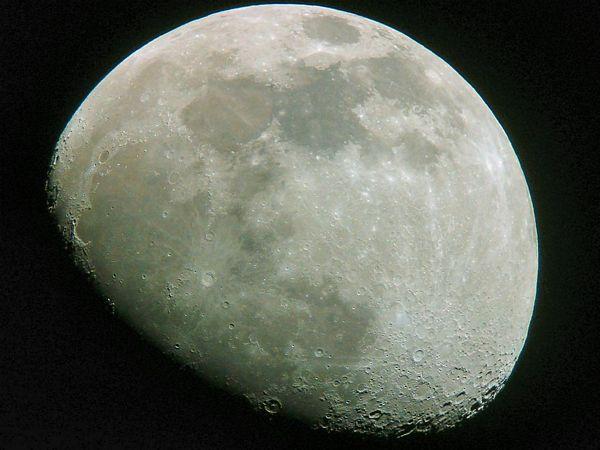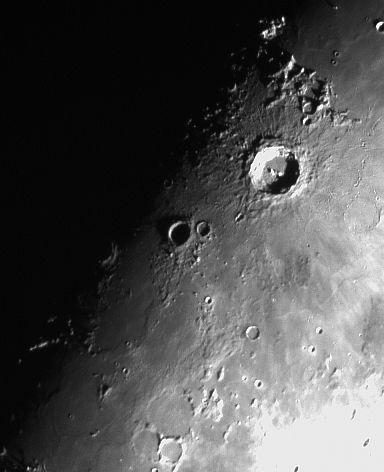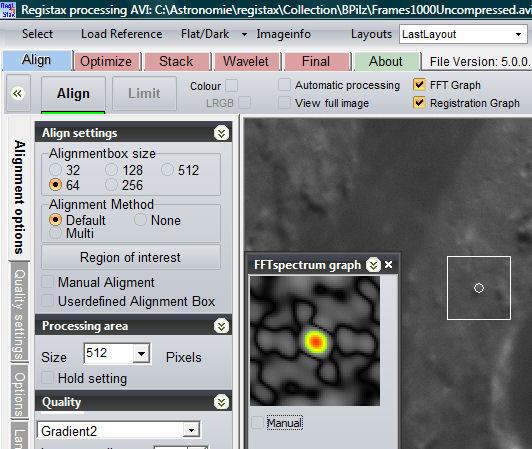Have you connected the telescope to a computer?
Having stumbled upon an old hubrapp about connecting a microscope to a computer, I decided to expand the horizons of the public and write that connecting a telescope to a computer can be much more interesting than counting germs. And if you are a fan of astronomy or Star Wars, then you are either already familiar with this opportunity, or you will be very pleased with it. So I decided to try and tell about my experience in this area.
Continuing the theme of “expanding the horizons” of habro-publicity, and I already did this, writing about electronic transmissions on bicycles and electronic forks , I will write about the Telescope + Computer bundle.
So - having read articles about astrophotography at AstroScope Laboratory

I caught fire to connect my Celestron NexStar 5 SE telescope to a computer. It turned out using the adapter from the COM port to USB.

I also took from a friend for a week a specialized camera for astrophotography of the planets of the Celestron NexImage solar system, which also connects to a computer via USB.
Even sitting on the balcony (fifth floor of the Khrushchev) with a laptop in Kharkov with all its dust, the opacity of the sky and a lot of light, I managed to take pretty good pictures of the moon (although of course I'm not a Hubble - I need to remember this).

Although I’ve been observing with my telescope for quite some time, in astrophotography I’m an absolute beginner, but at the same time I managed to quickly figure out the program for capturing video from the NexImage camera and processing the video clip to add frames in the Registax program.
Nearby plans to begin to deal with a more complex technique of shooting nebulae and galaxies.
The generally accessible telescope with a computerized mount and Go-To homing system can be easily connected to any computer using a COM port or USB. Through the planetarium program, observations can be made simply by selecting the object of interest with the mouse cursor and, thus, pointing the telescope at it.
By installing a camera on the telescope, you don’t even have to look into the eyepiece, using fairly simple and affordable software you can take your own pictures of objects in the starry sky. In addition, the chips of modern CCD cameras have a much higher sensitivity than human vision, thereby revealing details on such distant objects as galaxies and diffuse nebulae, which are simply inaccessible to human vision
A quite good telescope with a Go-To homing system can be purchased in the price range from $ 350 to $ 1,000, of course, there are more powerful and expensive models, but for astronomical observations with a computer, a tool that fits into the mentioned budget is enough. If you wish, you can even provide remote access to the telescope using Wi-Fi. Thus, removing the incredible beauty of the winter sky, you do not have to freeze with a computer on the street, but you can control the telescope installed in the yard from a warm house.
My friends, who put me on astronomy - quite experienced lovers of astronomy and astrophotography, even using relatively inexpensive equipment, achieve amazing results by taking incredibly beautiful and very detailed photos of star clusters, distant galaxies and nebulae, as well as the moon and planets of the solar system .

I caught fire to connect my Celestron NexStar 5 SE telescope to a computer. It turned out using the adapter from the COM port to USB.

I also took from a friend for a week a specialized camera for astrophotography of the planets of the Celestron NexImage solar system, which also connects to a computer via USB.

Even sitting on the balcony (fifth floor of the Khrushchev) with a laptop in Kharkov with all its dust, the opacity of the sky and a lot of light, I managed to take pretty good pictures of the moon (although of course I'm not a Hubble - I need to remember this).

Although I’ve been observing with my telescope for quite some time, in astrophotography I’m an absolute beginner, but at the same time I managed to quickly figure out the program for capturing video from the NexImage camera and processing the video clip to add frames in the Registax program.

Nearby plans to begin to deal with a more complex technique of shooting nebulae and galaxies.
The generally accessible telescope with a computerized mount and Go-To homing system can be easily connected to any computer using a COM port or USB. Through the planetarium program, observations can be made simply by selecting the object of interest with the mouse cursor and, thus, pointing the telescope at it.

By installing a camera on the telescope, you don’t even have to look into the eyepiece, using fairly simple and affordable software you can take your own pictures of objects in the starry sky. In addition, the chips of modern CCD cameras have a much higher sensitivity than human vision, thereby revealing details on such distant objects as galaxies and diffuse nebulae, which are simply inaccessible to human vision
A quite good telescope with a Go-To homing system can be purchased in the price range from $ 350 to $ 1,000, of course, there are more powerful and expensive models, but for astronomical observations with a computer, a tool that fits into the mentioned budget is enough. If you wish, you can even provide remote access to the telescope using Wi-Fi. Thus, removing the incredible beauty of the winter sky, you do not have to freeze with a computer on the street, but you can control the telescope installed in the yard from a warm house.
My friends, who put me on astronomy - quite experienced lovers of astronomy and astrophotography, even using relatively inexpensive equipment, achieve amazing results by taking incredibly beautiful and very detailed photos of star clusters, distant galaxies and nebulae, as well as the moon and planets of the solar system .
